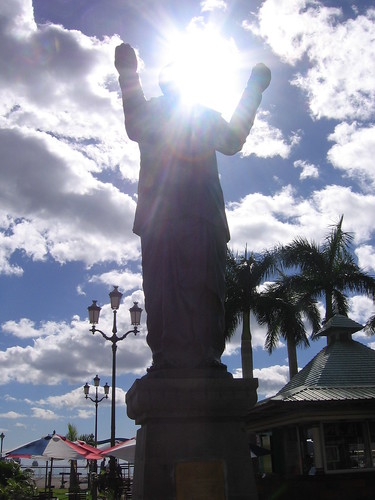Kinshasa: the imaginary city
As part of the Belgian national day celebrations, last Thursday was 'Kinshasa day' at Brussels' Palais des Baux-Arts, with free concerts by Congolese bands such as Jean Goubald and free entry to all exhibitions, including 'Kinshasa: the imaginary city', which won the Belgian pavilion the Lion D'Or at last year's 9th Venice Biennale of Architecture.
Anthropologist Filip de Boeck, photographer/filmmaker Marie-Francoise Plissart and architect/curator Koen van Synghel have certainly created an impressive, thought-provoking work based on the notion that in the Congolese capital, a city of six million people, the "main infrastructural unit is the human body".
According to the exhibition's creators, "bodies moor the city's urban imaginaries." Thus, the visitor is exposed to the influence of such crucial elements of Kinshasa's urbanism as religious TV channels, soap operas from Nigeria and Ghana, 'witch children' and the concept of semence ('seed'): giving to the church to reap a reward now or in the afterlife - a concept which is replacing traditional kin-based solidarity networks.
Perhaps the most interesting parts of this first-rate exhibition are the filmed interviews with four Congolese intellectuals - writers Vincent Lombume Kalimasi and Yoka Lye Mudaba, psychiatrist Adelin N'Sutu and human rights activist Thierry N'Landu Mayamba - who contemplate various keywords ('death', 'body', etc.) to tease out the nature of Kinshasa and what it means to be Kinois. Truly fascinating stuff. (The exhibition is on till September 4th: www.bozar.be).
Anthropologist Filip de Boeck, photographer/filmmaker Marie-Francoise Plissart and architect/curator Koen van Synghel have certainly created an impressive, thought-provoking work based on the notion that in the Congolese capital, a city of six million people, the "main infrastructural unit is the human body".
According to the exhibition's creators, "bodies moor the city's urban imaginaries." Thus, the visitor is exposed to the influence of such crucial elements of Kinshasa's urbanism as religious TV channels, soap operas from Nigeria and Ghana, 'witch children' and the concept of semence ('seed'): giving to the church to reap a reward now or in the afterlife - a concept which is replacing traditional kin-based solidarity networks.
Perhaps the most interesting parts of this first-rate exhibition are the filmed interviews with four Congolese intellectuals - writers Vincent Lombume Kalimasi and Yoka Lye Mudaba, psychiatrist Adelin N'Sutu and human rights activist Thierry N'Landu Mayamba - who contemplate various keywords ('death', 'body', etc.) to tease out the nature of Kinshasa and what it means to be Kinois. Truly fascinating stuff. (The exhibition is on till September 4th: www.bozar.be).

0 Comments:
Post a Comment
<< Home